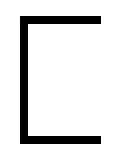Carian language
Carian language was an ancient Anatolian language spoken in the southwestern region of Anatolia, primarily by the Carians, a people who inhabited the area of what is now modern-day Turkey. The language is known from inscriptions, coin legends, and occasional references in ancient authors, providing a glimpse into the culture and history of the Carian people. Despite its significance, the Carian language remains only partially understood due to the limited number of texts and the language's unique features.
History and Discovery[edit | edit source]
The Carian language dates back to the 1st millennium BCE, with most of the surviving inscriptions dating from the 7th century BCE onwards. The discovery of Carian inscriptions has been primarily in the region of Caria, with additional texts found in Egypt, where Carian mercenaries served, and in Greece, indicating the wide-ranging influence and presence of the Carians in the ancient world.
Linguistic Features[edit | edit source]
Carian belongs to the Luwic group of the Anatolian branch of the Indo-European languages. It shares several features with other Anatolian languages, such as Luwian and Lycian, but also exhibits unique characteristics that distinguish it from its relatives. The Carian alphabet, derived from the Greek alphabet with some additional characters, reflects these linguistic peculiarities.
Alphabet and Phonology[edit | edit source]
The Carian alphabet consists of about 38 characters, some of which have no equivalents in the Greek alphabet, indicating sounds unique to Carian. The phonological system of Carian included vowels and consonants that are typical of Indo-European languages, but the exact pronunciation of many Carian sounds remains speculative.
Grammar[edit | edit source]
The grammar of the Carian language, while not fully understood, shows features typical of Anatolian languages, such as agglutination (the combination of morphemes to express grammatical relationships) and gender distinctions. However, the scarcity of texts makes it difficult to draw comprehensive conclusions about Carian syntax and morphology.
Inscriptions and Texts[edit | edit source]
Carian inscriptions have been found on stone monuments, pottery, and coins. These inscriptions are often funerary or dedicatory in nature, providing valuable insights into Carian society, religion, and culture. The texts, however, are frequently short and fragmentary, posing challenges to their interpretation and translation.
Decipherment and Research[edit | edit source]
The decipherment of the Carian language has progressed slowly, with significant advancements made in the late 20th and early 21st centuries. Researchers have utilized bilingual inscriptions, especially those in Carian and Greek, to unlock the meanings of Carian words and phrases. Despite these efforts, much of the Carian language remains a mystery, inviting further scholarly investigation.
Cultural and Historical Significance[edit | edit source]
The study of the Carian language offers important perspectives on the cultural interactions in the ancient Mediterranean world, especially between the Carians and their Greek and Egyptian neighbors. Understanding Carian contributes to our knowledge of ancient trade, warfare, and diplomacy, highlighting the interconnectedness of ancient civilizations.
See Also[edit | edit source]
This article is a linguistics stub. You can help WikiMD by expanding it!
Transform your life with W8MD's budget GLP1 injections from $125
W8MD offers a medical weight loss program NYC and a clinic to lose weight in Philadelphia. Our W8MD's physician supervised medical weight loss centers in NYC provides expert medical guidance, and offers telemedicine options for convenience.
Why choose W8MD?
- Comprehensive care with FDA-approved weight loss medications including:
- loss injections in NYC both generic and brand names:
- weight loss medications including Phentermine, Qsymia, Diethylpropion etc.
- Accept most insurances for visits or discounted self pay cost.
- Generic weight loss injections starting from just $125.00 for the starting dose
- In person weight loss NYC and telemedicine medical weight loss options in New York city available
- Budget GLP1 weight loss injections in NYC starting from $125.00 biweekly with insurance!
Book Your Appointment
Start your NYC weight loss journey today at our NYC medical weight loss, and Philadelphia medical weight loss Call (718)946-5500 for NY and 215 676 2334 for PA
Search WikiMD
Ad.Tired of being Overweight? Try W8MD's NYC physician weight loss.
Semaglutide (Ozempic / Wegovy and Tirzepatide (Mounjaro / Zepbound) available. Call 718 946 5500.
Advertise on WikiMD
|
WikiMD's Wellness Encyclopedia |
| Let Food Be Thy Medicine Medicine Thy Food - Hippocrates |
Translate this page: - East Asian
中文,
日本,
한국어,
South Asian
हिन्दी,
தமிழ்,
తెలుగు,
Urdu,
ಕನ್ನಡ,
Southeast Asian
Indonesian,
Vietnamese,
Thai,
မြန်မာဘာသာ,
বাংলা
European
español,
Deutsch,
français,
Greek,
português do Brasil,
polski,
română,
русский,
Nederlands,
norsk,
svenska,
suomi,
Italian
Middle Eastern & African
عربى,
Turkish,
Persian,
Hebrew,
Afrikaans,
isiZulu,
Kiswahili,
Other
Bulgarian,
Hungarian,
Czech,
Swedish,
മലയാളം,
मराठी,
ਪੰਜਾਬੀ,
ગુજરાતી,
Portuguese,
Ukrainian
Medical Disclaimer: WikiMD is not a substitute for professional medical advice. The information on WikiMD is provided as an information resource only, may be incorrect, outdated or misleading, and is not to be used or relied on for any diagnostic or treatment purposes. Please consult your health care provider before making any healthcare decisions or for guidance about a specific medical condition. WikiMD expressly disclaims responsibility, and shall have no liability, for any damages, loss, injury, or liability whatsoever suffered as a result of your reliance on the information contained in this site. By visiting this site you agree to the foregoing terms and conditions, which may from time to time be changed or supplemented by WikiMD. If you do not agree to the foregoing terms and conditions, you should not enter or use this site. See full disclaimer.
Credits:Most images are courtesy of Wikimedia commons, and templates, categories Wikipedia, licensed under CC BY SA or similar.
Contributors: Prab R. Tumpati, MD




